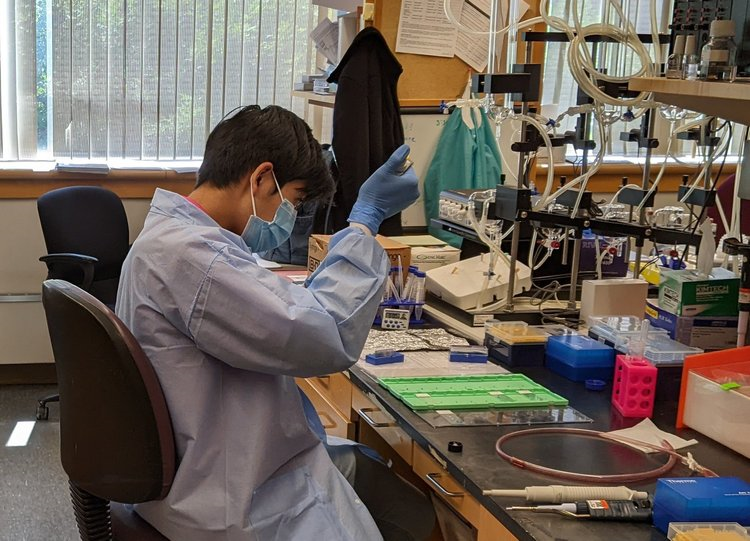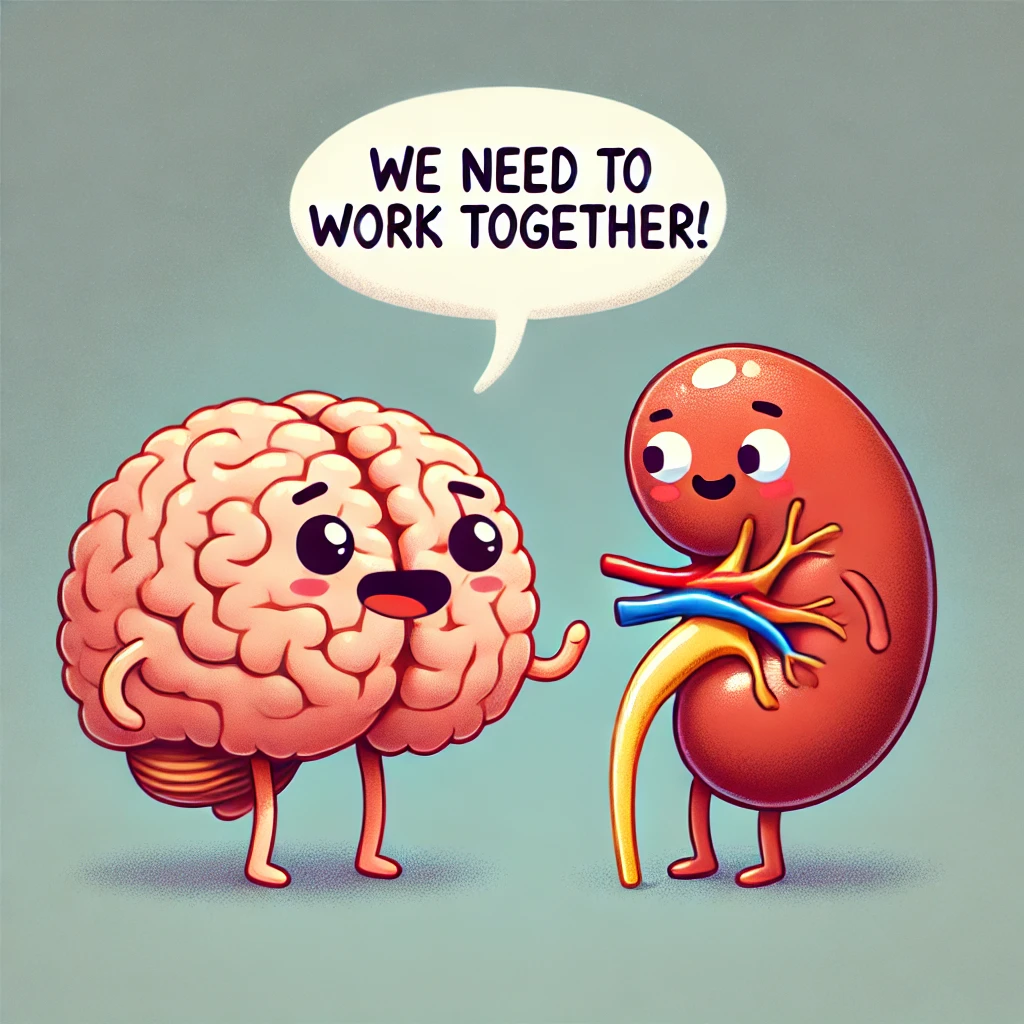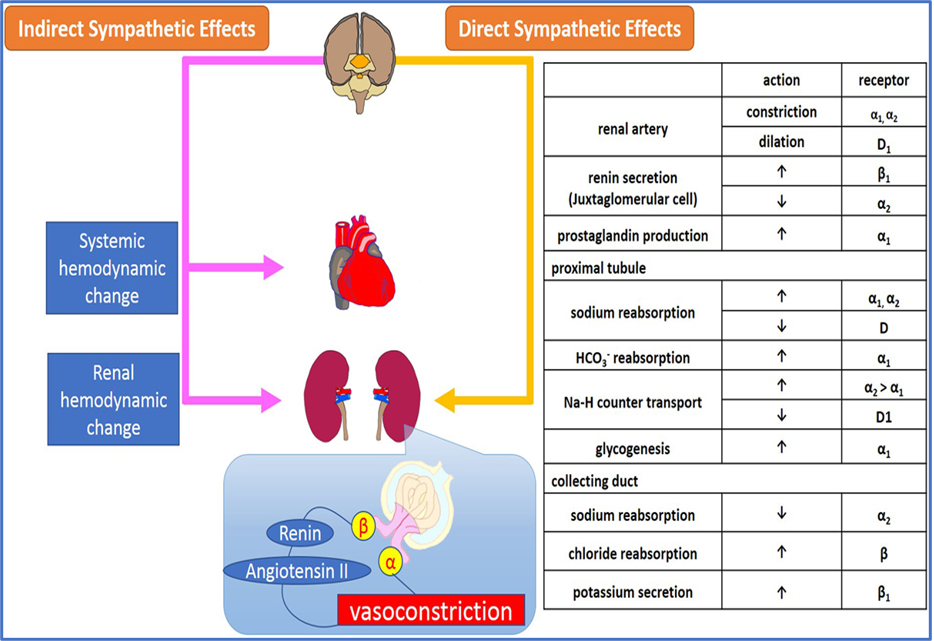What is the autonomic nervous system?

participates in the Harvard Summer Research
Program in Kidney Medicine. For 8 weeks
in June/July 2022, he joined the lab to learn
new skills and perform original research.
The sympathetic and parasympathetic nervous systems are two parts of the autonomic nervous system that control involuntary body functions, and organs like the kidney. The sympathetic system prepares the body for "fight or flight" responses during stress, while the parasympathetic system promotes "rest and digest" functions to maintain calm and conserve energy.

Sympathetic nerves from the brain reach nearly all nephron segments and renal vascular elements to regulate Na+/electrolyte balance, renin release, autoregulation of renal plasma flow (RPF) and glomerular filtration rate (GFR) in normal and stressed conditions. Disordered brain regulation of renal function may cause chronic salt retention and hypertension, and may contribute to acute kidney injury, when shock and sepsis markedly augment sympathetic activity, cutting RPF and GFR. At present we know little about the brain circuits which control sympathetic output to the kidney.

